Interview with artist Connie McCann
Connie McCann has had such a positive impact on so many art students over the years. She taught art in North Little Rock at both Ridgeroad Junior High and NLR High East Campus. However, the bulk of her teaching career was spent at Little Rock Hall High School where she served as Visual Arts Department Chair from 2006 until retirement in 2014. In 2009 and 2012 she was awarded the Little Rock School District (LRSD) Crystal Award as part of the LRSD Teacher of the Year Program and in 2014, she was awarded the Arkansas Art Educators “Secondary Level Art Educator of the Year Award”. Connie also taught group art lessons in her home studio for many years. Her work can be found at her website and she is represented by Boswell Mourot Fine Art in Little Rock, Arkansas.
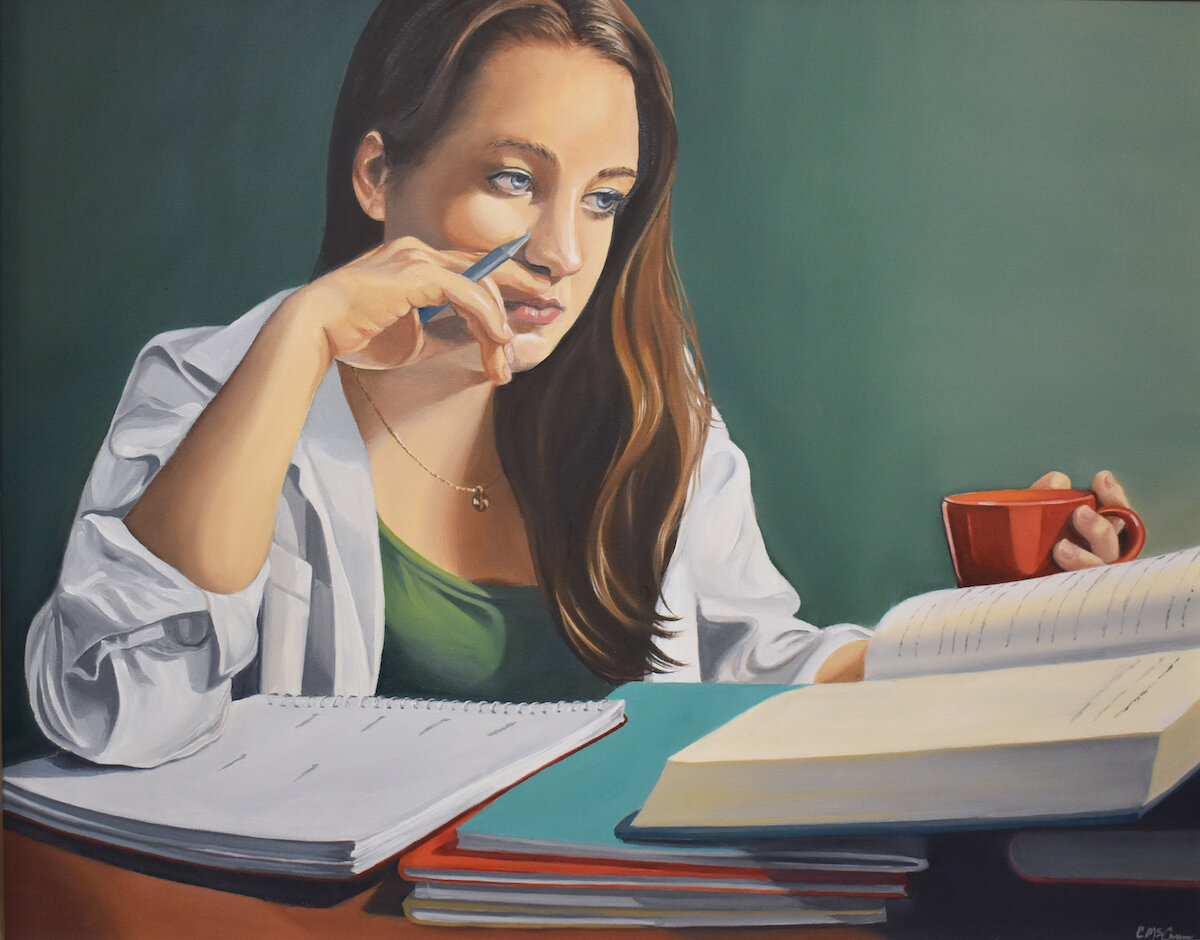
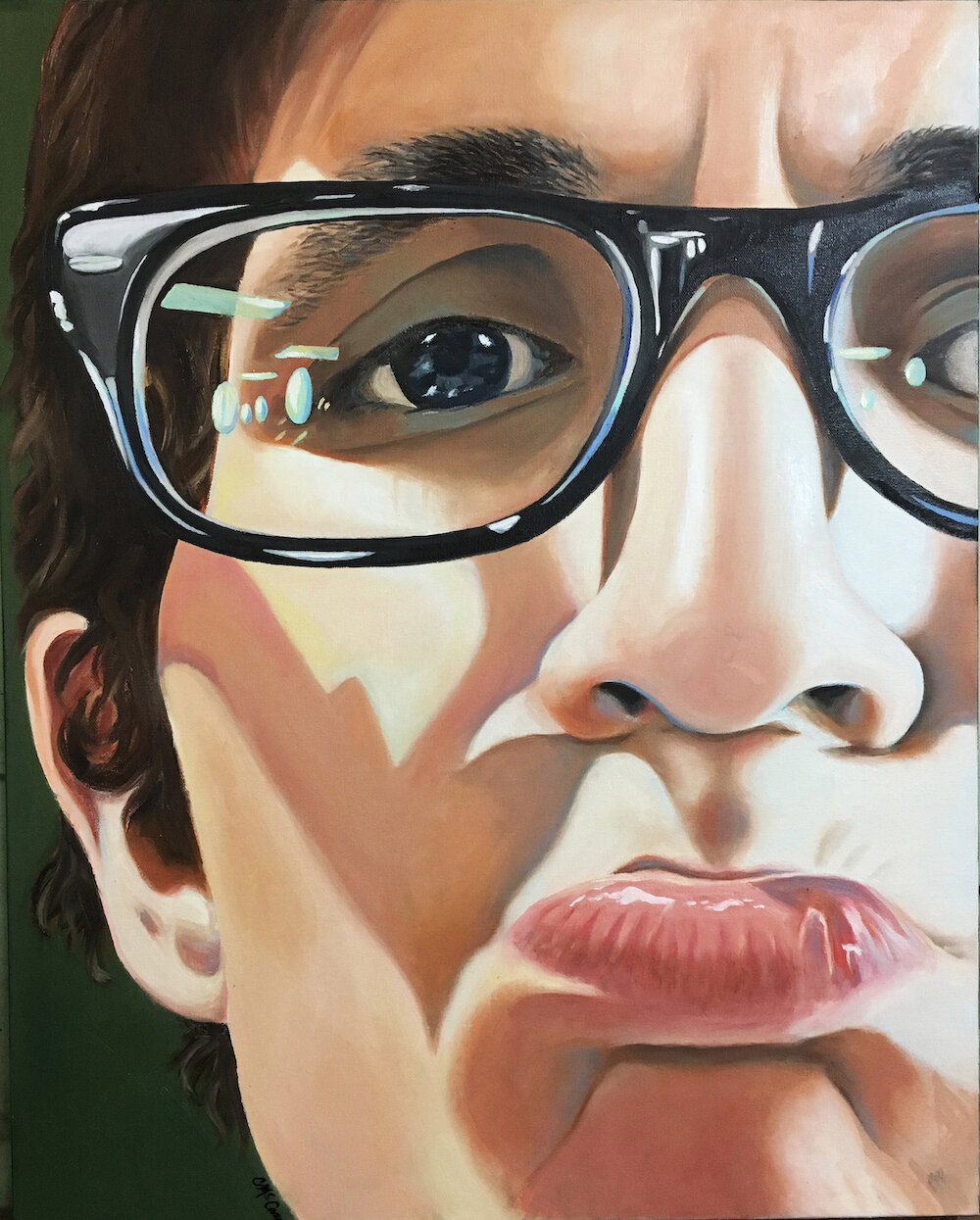

AAS: Connie, have you always lived in Arkansas?
CM: I was born in Arkansas but, because of my father’s work, our family moved frequently throughout my childhood. We lived in Missouri, California, and a few towns in Arkansas before settling in Jonesboro when I was in 5th grade. I graduated from Jonesboro High and started college at Arkansas State University. That is where I met my husband, Dennis McCann. We married and then moved to central Arkansas and continued our education at UALR.
AAS: You taught junior high and high school art for so many years. What did you love most about working with young students?
CM: My favorite part of teaching was seeing the look of excitement and triumph on the faces of the students when an artwork was successful. Many students came into class with the fear of failure and were unsure about putting a part of themselves out there for everyone to see. I am an encourager and constantly reminded my students that, “you can do this, just relax and have fun”. It was exciting to see the enthusiasm and energy grow. They became proud of the new skills that were learned in class. Since retirement, I have had many students tell me that the art room became their “safe place” and that they felt comfortable to express themselves.
“I am an encourager and constantly reminded my students that ‘you can do this, just relax and have fun’.”
AAS: I think you are known most for your portraiture work. They are wonderfully intimate and often tight. Windy Day in KC is just spectacular. Has the face always been your favorite subject?
Windy Day in KC, oil on canvas, 36” x 36”
CM: Yes, I have always loved portraiture, but my presentation of the faces has changed over the years. My early portraits were more traditional in both style and composition. In my recent pieces, I have moved the faces into foreground so that they completely fill the surface and background noise has been removed. I have also introduced other objects that sometimes hide portions of the face. In my oil painting, Windy Day in KC, I took a photo of my granddaughter, Haley, as we stood outside Union Station in Kansas City. The blue glasses and the movement of the hair became an important part of the composition.
AAS: Art collectors Ted and Joe, who I interviewed last year, mentioned Ginger and Spice as one of their favorite acquisitions. The model is one of your grandkids?
Ginger and Spice, oil on canvas, 30” x 24”
CM: Yes, Ginger and Spice again features my granddaughter, Haley, and is one of my favorite pieces. Haley is my oldest grandchild. She has ginger hair and a quirky, expressive, and spicy personality so I tried to incorporate that into the painting. Thus, the title Ginger and Spice. In this piece, I opted to move the face forward and allowed it to run off the canvas. I used a strong light source that created shadows, reflections, and organic shapes that added a dramatic flair to the image.
AAS: How do your grandkids feel about modeling for you?
CM: Dennis and I currently have eight grandchildren who range in age from 19 to 7 (and one more arriving in July). They have each been the subject of one or more of my artworks. It has become a common event to have the kids don clothing, jewelry, hats and glasses for photo sessions at my house. The older children are aware of what I look for when taking the photos and are quite helpful in the whole process. I often incorporate their suggestions in my work. They love it when I tell them that someone bought a piece that they posed for and they love seeing their faces on the walls in galleries.
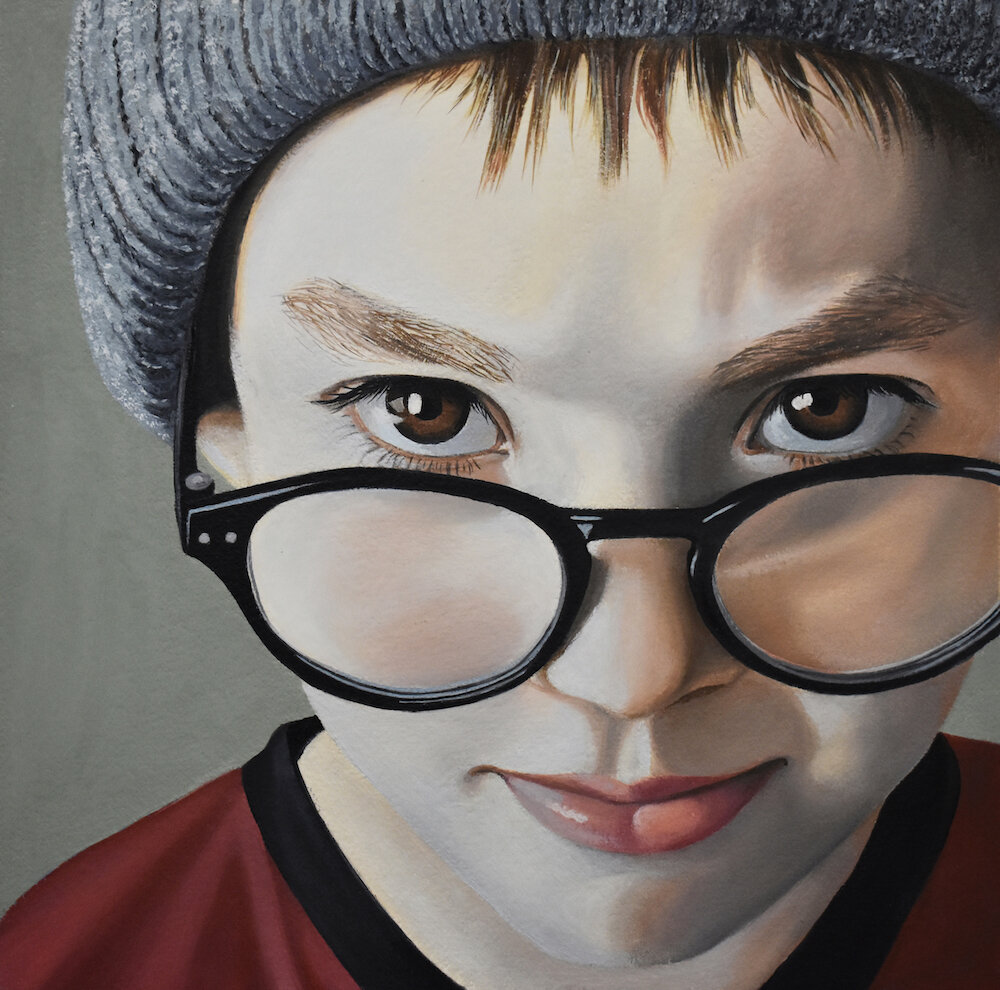
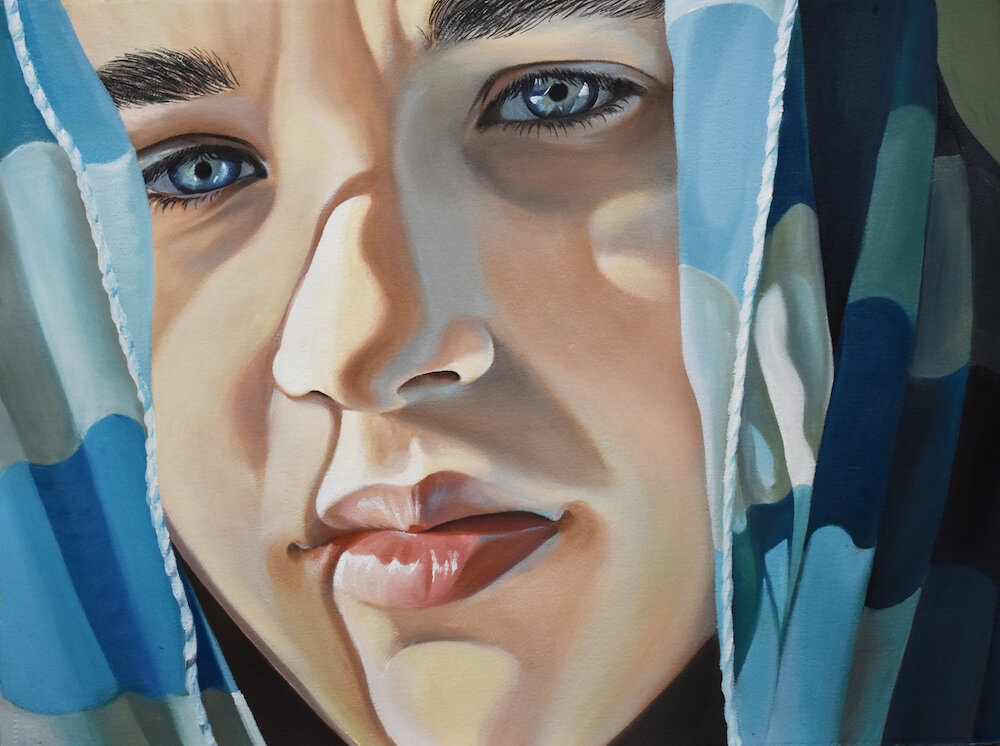
AAS: The McCann family of artists is certainly well known. I interviewed your son Jason last year and my interview with Dennis will be posted next week. How deep do artists go in your family?
CM: Dennis and I are unaware of any other artists in our family history, so I really don’t know where the interest in art began. Dennis and I met in college art classes and making art has been a constant in our lives. We each have our own studios, but it is not uncommon to for us to work side by side. Jason’s studio is in his home, but we share ideas and ask one another for advice as we work. We constantly message each other to ask for advice about what we are working on. We all love what we do and that has carried over into the next generation.
All of the McCann children and grandchildren have been immersed in art since birth and some of them have chosen to follow that career. However, they have also grown up around parents who are educators and some of them have chosen to pursue that career. Jason has followed both paths and is an educator and an artist. Our daughter, Erin, is a PreK4 teacher and our daughter, Christen, is a high school Spanish teacher. As a high school art teacher, I taught all of my children, so I guess it is quite normal to see the two paths that they chose to follow.
The grandkids are following a similar route. Our granddaughter, Haley, is pursuing a degree in Art Education at The University of Montevallo in Alabama. Jason’s daughter, Leah, draws and paints and has had works hung at the Arkansas Arts Center. His daughter, Reilly, was recently accepted into the Visual Arts program of Arkansas Governor’s School and she is considering majoring in art in college. As for the younger kids, who knows what their talents will be. We just want them to be happy, healthy, and successful in whatever career they pursue.
Speedo, pastel on paper, 30” x 22”
AAS: In addition to oils, you do amazing work in pastel. I just love Speedo, Jen and Day Dreamer and the grey shading you used. They look like they were fun to do.
CM: I love working with pastel and getting my hands dirty in the drawing process. I don’t get that same feeling when painting. Speedo, Jen, and Day Dreamer have been successful for me. Speedo won the Best in Show award in The Art of the Heartland National Competition in Mena, Arkansas and Day Dreamer was accepted into the 2020 Art at the Center National Juried Show in Overland Park, Kansas. All three pieces are high contrast portraits and have part of the face hidden by reflective glasses. The reflections tell the story of what is happening in the surroundings. They are all done with gray-toned soft pastels on white paper. Although I sometimes work with color pastels, I love the look of black, white, and gray…it has an elegant quality. I begin this process as I would with any artwork, by first doing a pencil sketch. When adding the pastel, I work from light to dark, blending and rubbing the pastel into the paper. This allows me to create subtle and sensitive value changes. Although these are obviously drawings, they have similarities to paintings. I just paint with my fingers rather than a brush.
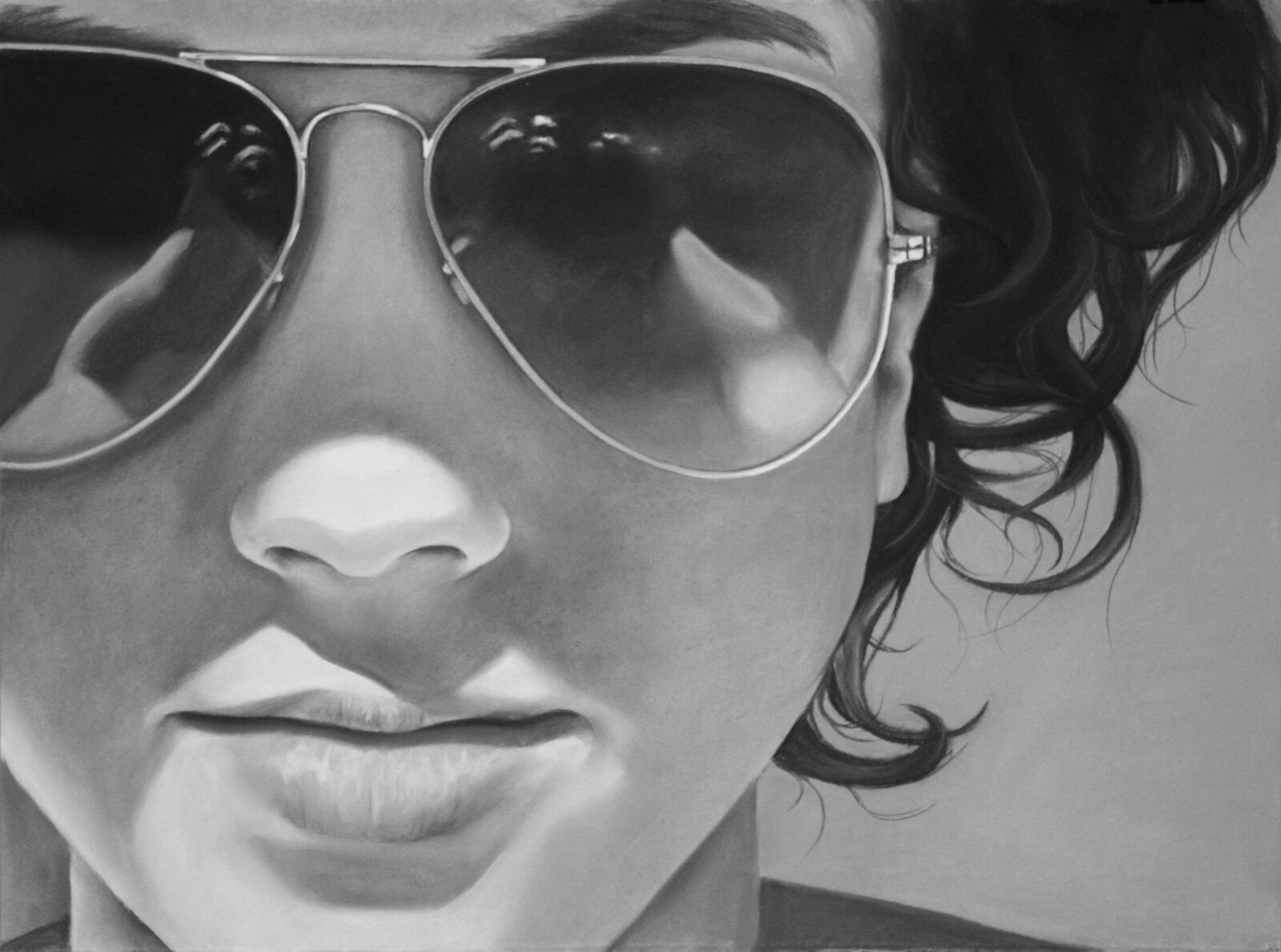
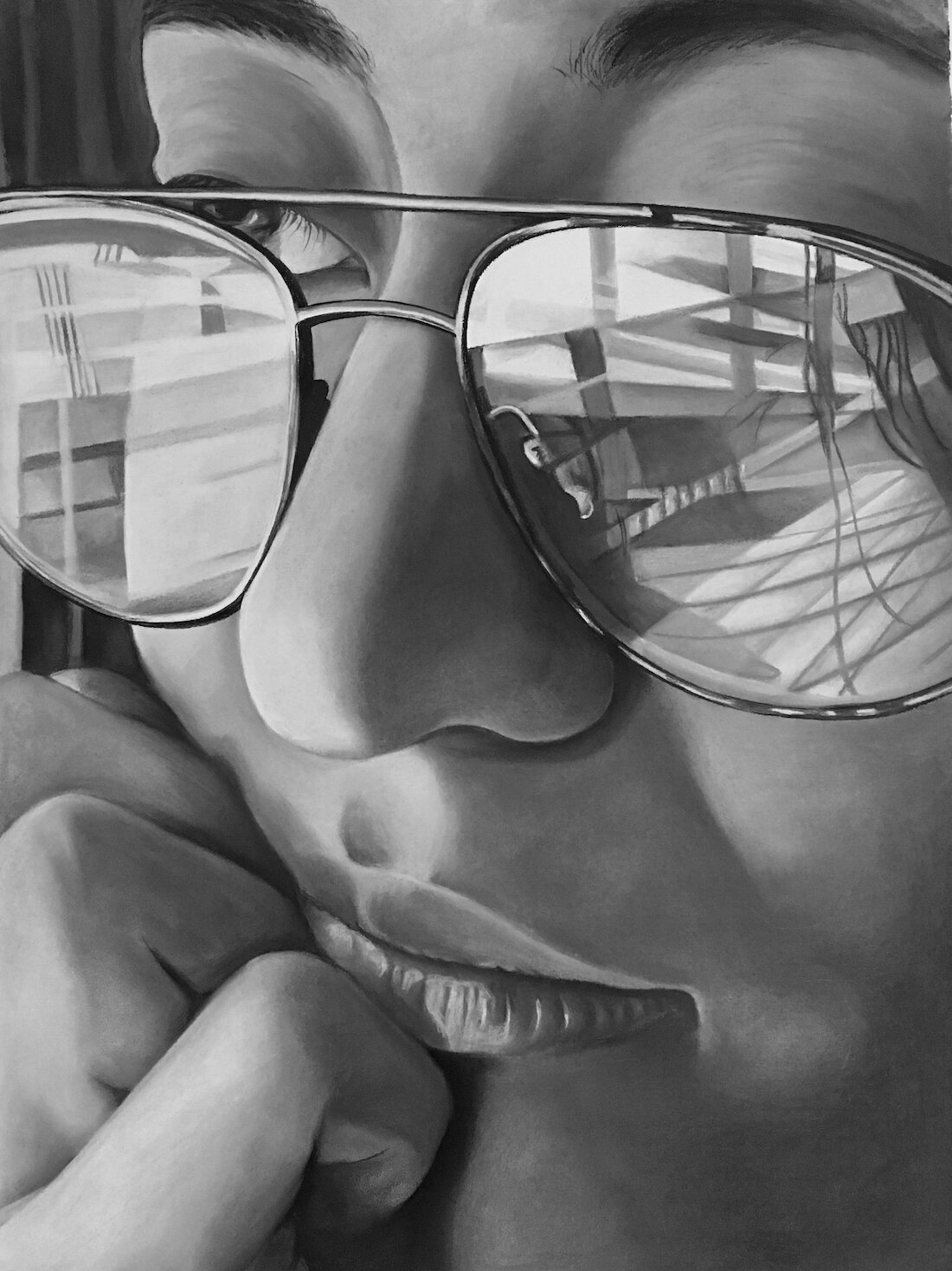
AAS: Of course, portraiture is not your only subject. You have some wonderful still life paintings such as Coffee Time. You created so much depth in that piece.
Coffee Time, oil on canvas, 30” x 40”
CM: I enjoy working with still life subjects and have done several in the last couple of years. Coffee Time is part of a series based on Fiestaware dishes. I am fascinated with the brilliant colors and gentle curves of each piece. As with my portraits, I took photos of the dishes using a strong light source. This created both cast and reflective shadows on the image. The bright highlights, the dark background, and the shadows are important in creating the perception of depth.
The Blue Tablecloth won ‘Best in Show’ last year at the Small Works National Competition in Mena, Arkansas.
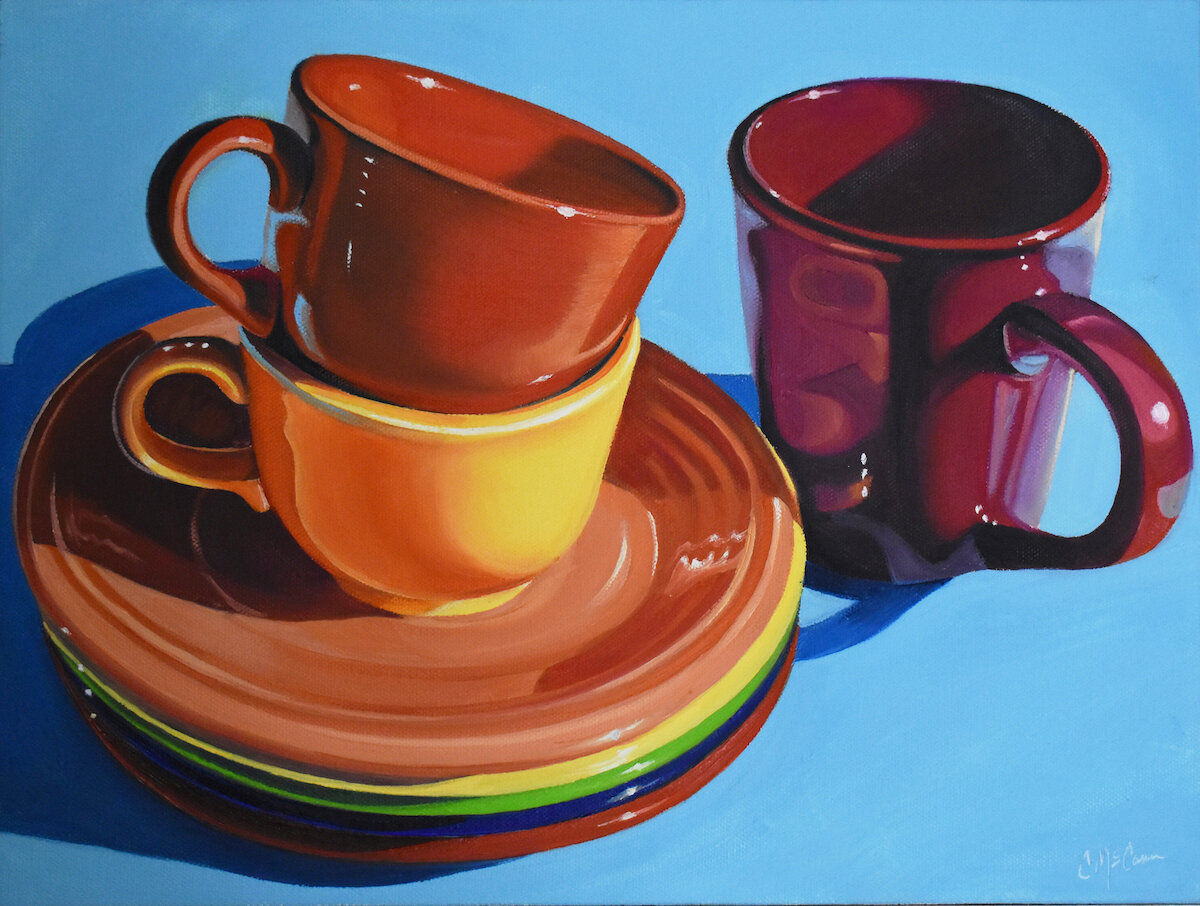
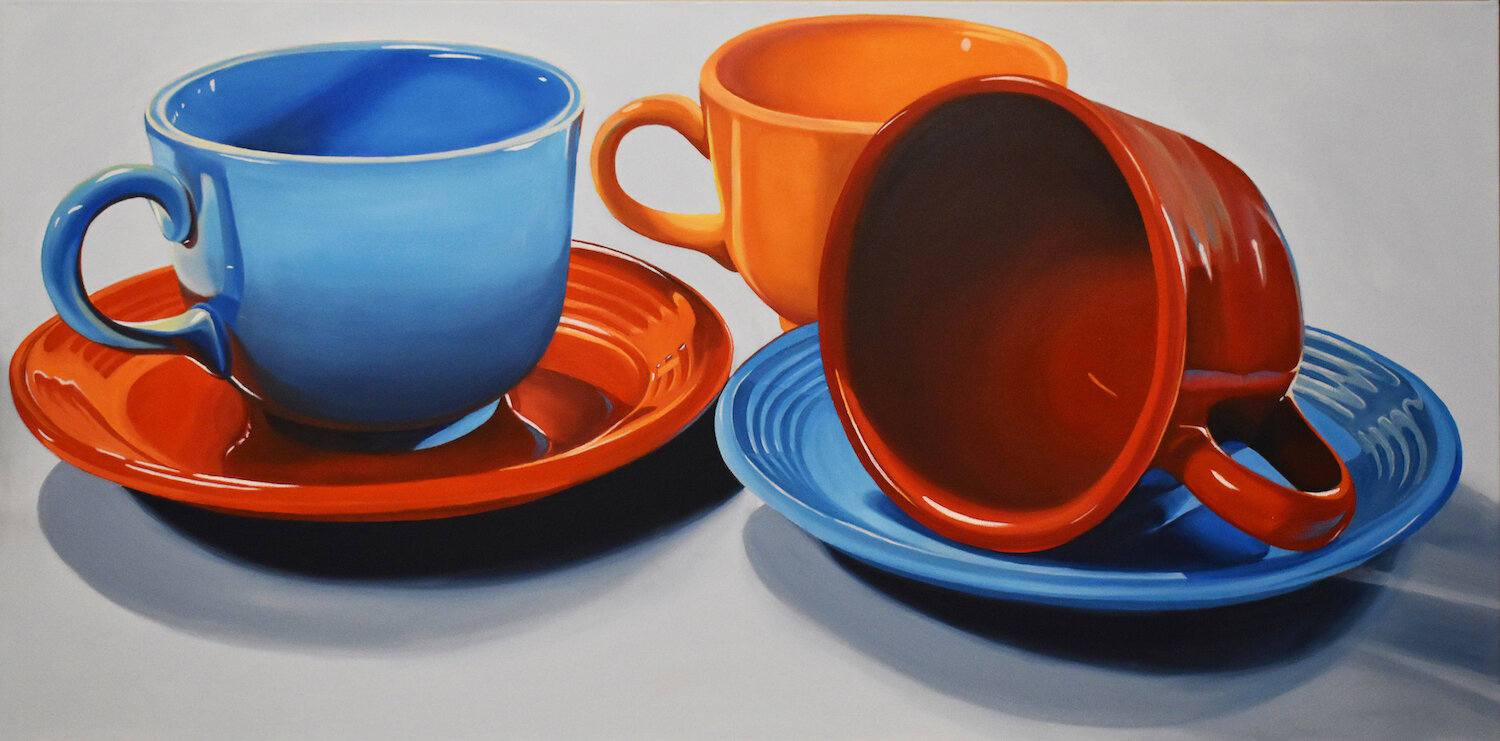
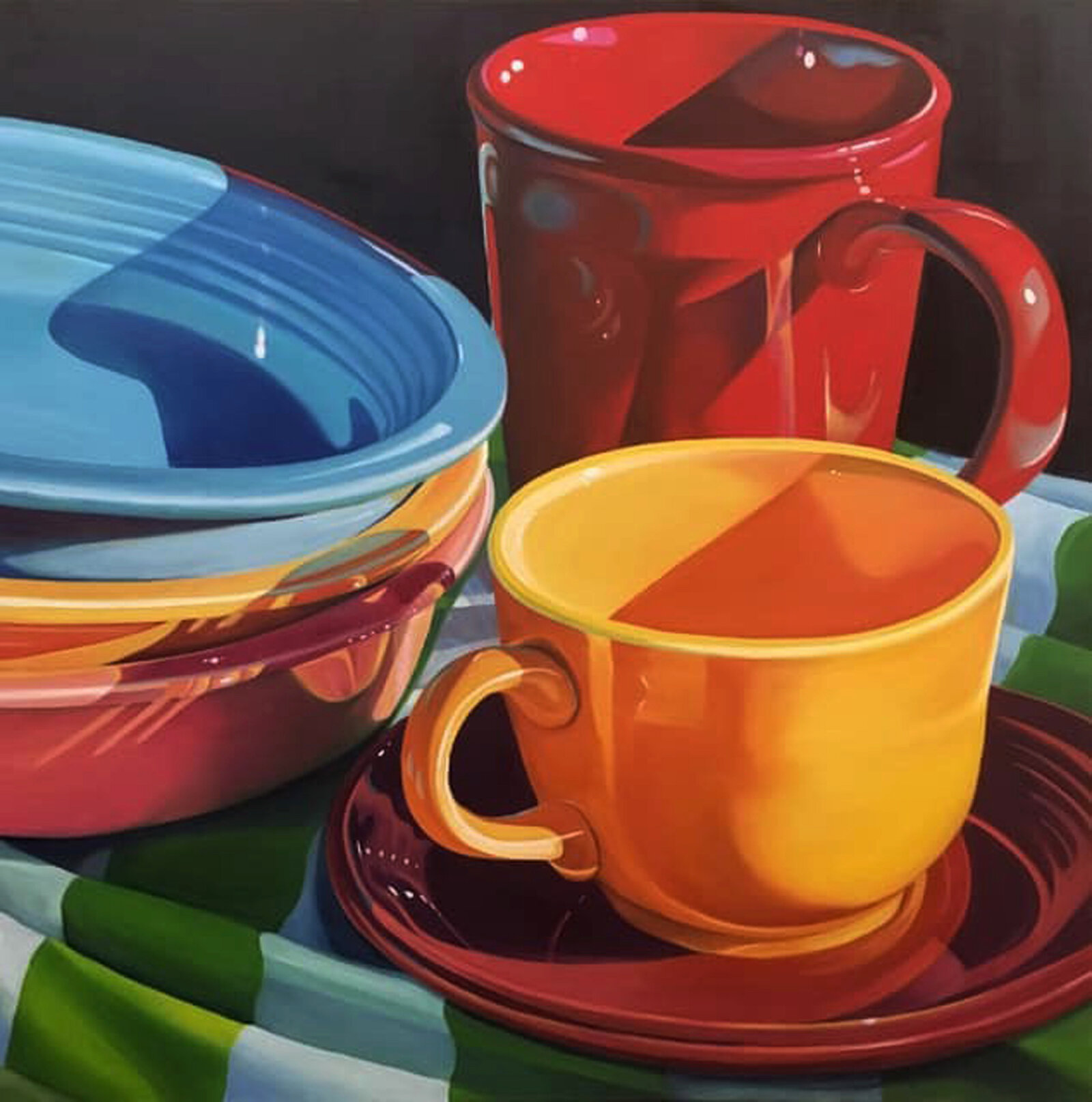
AAS: One last portrait to talk about – The Girl With The Blue Earbuds. It is so lovely and its homage to Vermeer is spot on and gave me a chuckle.
Girl with the Blue Earbuds, oil on canvas, 40” x 30”
CM: This piece is another of my favorites and is a portrait of my granddaughter, Reilly. I took this photo while learning how to use the camera on my new cell phone. Reilly was sitting at my kitchen table making jewelry and listening to music while working. I spoke to her and when she glanced up and I quickly took the photo. Reilly has a quiet, thoughtful, and reserved personality and I think that shows in the expression on her face. The earbuds were actually white, but I changed them to blue to accent her intensely blue eyes. I added the deep indigo background to create a “Renaissance-like” drama.
AAS: What is it about being in front of a blank canvas that excites you?
CM: Beginning a new drawing or painting is always a balance of excitement and fear for me. I feel excitement because I can mentally visualize what I want the piece to become. I feel fear because I wonder if I can make it meet my own expectations. I think that I am my own worst critic.
AAS: You have worked with the very young and the ‘older’ student. What is your approach to teaching someone to become an artist – or to find their hidden talents?
CM: I like to think that, rather than teaching students to become artists, I teach them to feel comfortable with expressing themselves. In the art classroom, students will obviously learn the skills necessary to create a successful artwork and some will have more success than others. But, along the way, students will also develop skills that carry over into everyday life. They learn how to communicate ideas. They learn how to encourage others. They learn how to cooperate with classmates or coworkers. They learn to respect and admire other cultures. They learn how to “not give up” and to carry a project through to the end. Ultimately, whether they become an artist or not, they will find their talents and will be successful in their chosen fields.


